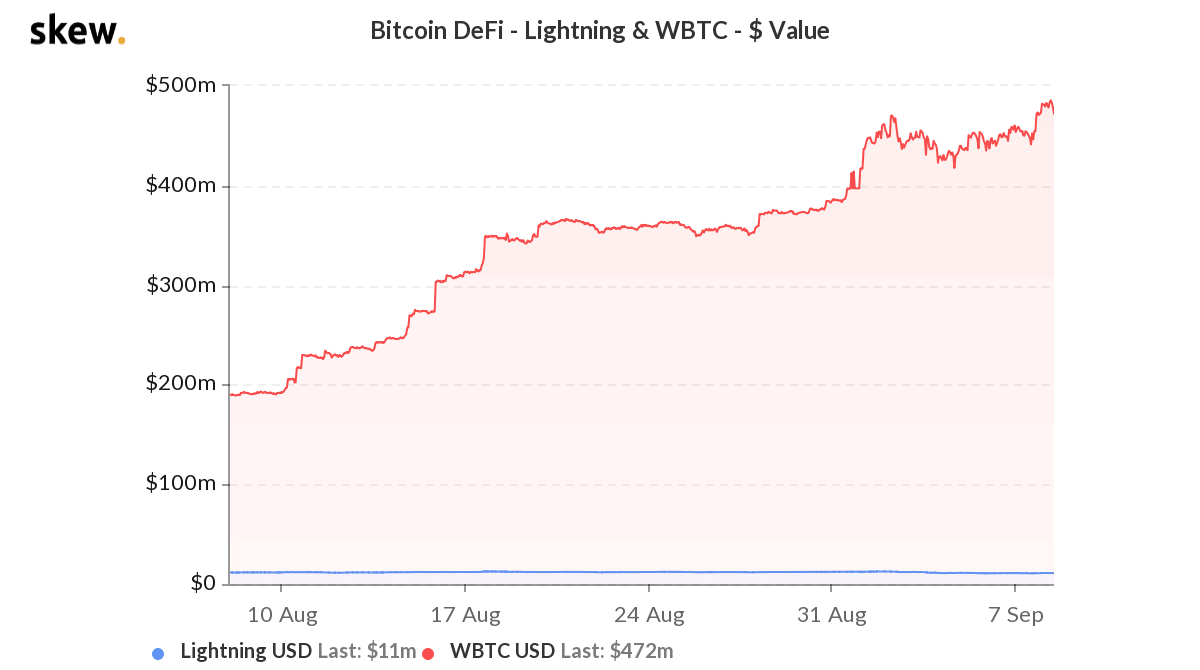Despite being the undisputed leader of the cryptocurrency realm, Bitcoin blockchain has been riddled with scalability issues. Due to this, many implementations have been tried and tested to make the network more efficient.
One such is Blockstream’s sidechain-based settlement network, Liquid’ which is essentially a second layer solution for traders and exchanges, that enables faster, more confidential Bitcoin transactions and the issuance of digital assets.

Despite being heralded as a promising solution to the network’s scalability problems, Liquid network figures appear to have stagnated. The circulation of L-BTC was on an uptrend since the beginning of the year. Rising from 600 L-BTC to 2,054 L-BTC, recording a growth of more than 242% in a period of just four months. However, post-April, the momentum appeared to have weakened. At the time of writing, there were 2,593 L-BTC in circulation, a rise of just 26% since April.
Ethereum- the unofficial sidechain for Bitcoin?

Interestingly, this stagnation in Bitcoins locked on the popular sidechain coincided with the explosion of DeFi. The Ethereum network is becoming Bitcoin’s largest second layer network. This was evident from the fact that the number of Bitcoins “wrapped” and flowing on the Ethereum blockchain has been increasing at an incredible rate.
TWJ had earlier reported that Wrapped Bitcoins’s market capitalization hovering a little below $500 million.
Second-layer solutions struggle as Bitcoin continues to be channeled onto the Ethereum blockchain
Additionally, the total value locked [TVL] for BTC-pegged ETH tokens has surpassed both Liquid as well as the Lightning Network platform combined. At the time of writing, BTC locked in LN was just 1,068. While this does not give the full picture as Bitcoins held on LN is much higher than what is available with public data and not the ones from the private channels, this, however, tells us that the second layer solution is struggling to add more liquidity.

